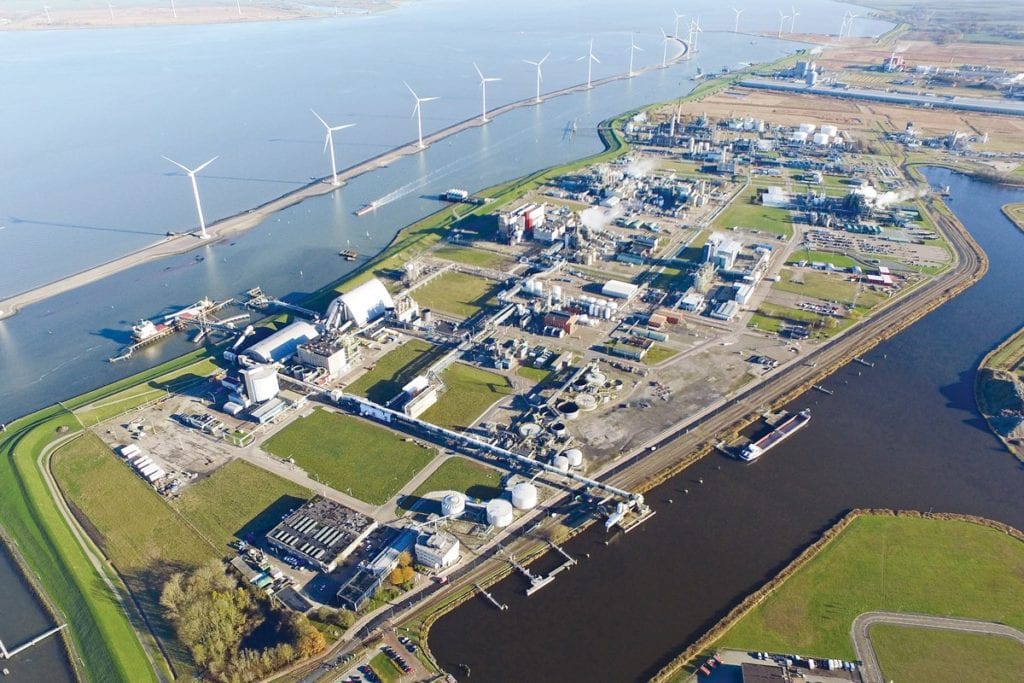
Green hydrogen is often seen as a wonder technology. It transforms electricity from renewable sources and water into a gas that can be stored, transported, and used as a feedstock in industry, as a transportation fuel, as a heating fuel or to generate electricity in various applications. The production of green hydrogen only produces oxygen as a side-product, and its use only produces water.
Its supporters see green hydrogen playing a strong role in the future energy landscape, with up to 20% of total energy being supplied (‘conveyed’ would be a better word) by 2050.
Other analysts see a much more modest role, likely limited to the replacement of current grey hydrogen as an industry feedstock, plus usage in some other hard to abate sectors like the steel industry, where hydrogen can be used for direct iron ore reduction.
The technology to produce green hydrogen has been available for two centuries… in the lab and as pilots and small-scale units. Only one large-scale plant, in Norway, has been running for a significant amount of time (in fact more than 60 years).
The success of green hydrogen will depend on:
- Complementarity with batteries. Hydrogen and batteries both represent ways to store renewable electricity, but each have their specificities. Batteries will be shorter-term – an hour to 12 hours. Batteries also perform other use cases that H2 will not easily be able to accomplish such as Volt/VAr management, photovoltaic smoothing, load smoothing, seamless transition to an island mode, etc. Hydrogen on its side can support baseload generation – from an energy storage perspective. H2 will support long-duration energy storage, with days or even months of storage capacity. Note that heat storage in industrial applications may be an alternative or complement.
- Creation of the right demand and supply chains. There is a need to identify and secure cheap renewable power generation sourcing, which may be available only at random times (and hence not 24/7). There is also a need to secure demand, which today is non-existent or covered already by grey hydrogen (which comes at much lower prices). The creation of regional hydrogenclusters, combining renewable energy farms, hydrogen production and some committed industrial customers is an approach promoted by some groups.
- Mastering the nitrogen oxides (NOx) emissions in the various hydrogen combustion processes (gas turbines, Internal combustion engines, boilers, etc.). The higher flame speed of hydrogen combustion increases the flame temperature locally, which can generate high levels of NOx. NOx emissions create acid rain, deforestation, and breathing illnesses. It took the US 15 years to improve the emissions regulations for NOx and another 15 years for the power industry to reduce NOx by 84%. We should be careful not to go backwards on this emitter. Note this concern is valid for all ‘colors’ of hydrogen, be it green, blue or grey.
- Price decrease of renewable electricity. Even with low cost renewables (<$30/MWh) and high efficiency hydrogen generation (>75% processes), the cost of green hydrogen is likely to be $1.5 – $2/kg which is roughly $12 – $15/MMBtu by 2030. For half the world, this is a good price; for the other half this is too high a cost. Relevance of green hydrogen may depend on local regulation such as carbon taxes. One also needs to integrate the intermittency of renewable electricity. It might not be massively available permanently, meaning the green hydrogen production plant may not be running 24/7/365, which increases the average production cost from slower capex amortization, especially as intermittent operations would lead to the choice of PEM electrolyzers, which require higher capex.
- Availability and perennity of government subsidies. Several governments have today committed to fund green hydrogen projects, but public financing may switch to more short-term Covid-impact mitigation subsidies and funding. Would-be green hydrogen project operators may need to turn to public-private partnerships between government entities and private capital.
- Cost decrease of electrolyzers. Electrolyzer costs are today around $850/kW, but the suppliers are on their way to achieve economy of scale and learning curve effects. Electrolyzer costs of $300/kW are already available in China, and reasonable estimates suggest that electrolyzers could be widely available for $200/kW by 2030 and $100/kW by 2050.
- Cost decrease of green hydrogen Balance of Plant, securing yield & uptime, connection with grids, financing of renewable electricity supply. These topics are often ignored, as many focus on the electrolyzer itself.
- But first, the electrolyzer technology choice must be driven by the regular or intermittent characteristics of the electricity supply (an alkaline electrolyzer has a very long startup time, PEM electrolyzers can ramp up more rapidly but are more expensive).
- Then, the Balance of Plant, civil works, power system, control systems, and desalination of sea water may represent more than the costs of electrolyzers (especially with alkaline technology). All these costs need to be optimized, knowing that there is little benchmark so far.
- Finally, there is little benchmark on operating such plants. What kind of control systems are most relevant? How many operators are needed? How to organize asset performance management and maintenance? How to ensure optimized uptime and production ratio?
There is much more to the choice of a car than the type and performance of the engine. First, do you want to purchase a car, to lease it, or enjoy when needed a ‘car as a service’? Then, you may choose the brand or make on available dealer and repair-shops network, on an attractive financing scheme, on reputation for reliability, on size, comfort, or various gadgets.
Likewise, a green H2 plant project should start with the definition of where renewable electricity will come from, and where the produced H2 will go to. Intermittencies in available power or in offtake are a crucial factor on the choice of electrolyzer technology, but also on the design of BOP. Will the plant purchase its renewable power from the market? What kind of PPA can be ensured with the local utilities? Or shall it have its associated wind or solar farm? And how to finance that?
The complete ecosystem and industrial cluster must be organized, with support from the right private and public financing.
Then the design of the complete plant needs to be optimized. A digital twin from early stages will support the optimizations in design, commissioning, operations, and maintenance.
A modular approach and deployment can be of interest, but again it must be optimized, in particular on the ramp-up of electrical and controls infrastructure.
The electrical design for such a large system can often be improved by 20% vs ‘first shot’ design, when applying the right expertise and tools.
The controls of such a plant need to be complete enough, with the right remote operations (and cybersecurity) capabilities if one wants to avoid having dozens and dozens operators, on a 24/7 mode… which is a risk in first plants that will have no benchmark.
The asset performance management of the plant must be optimized as well, to minimize downtime.
To conclude: you can choose your car on the pure performance of the engine, but likely you want to get the right advice and select the right support–from financing to optimized overall performance and uptime.
Schneider Electric and its partners AlphaStruxure and AVEVA can support you on your green hydrogen journey.



